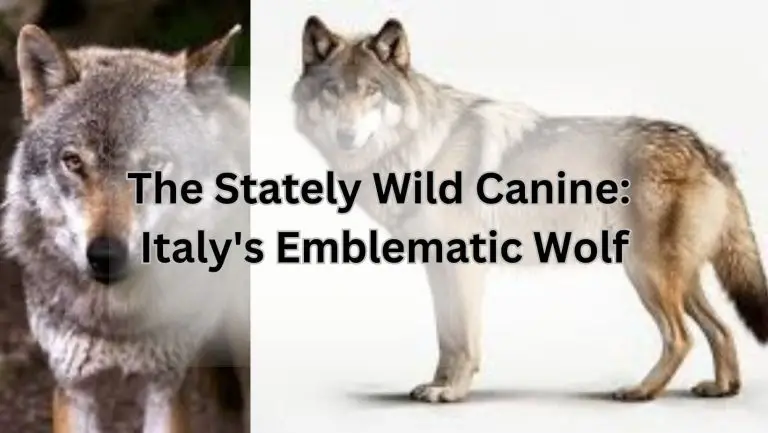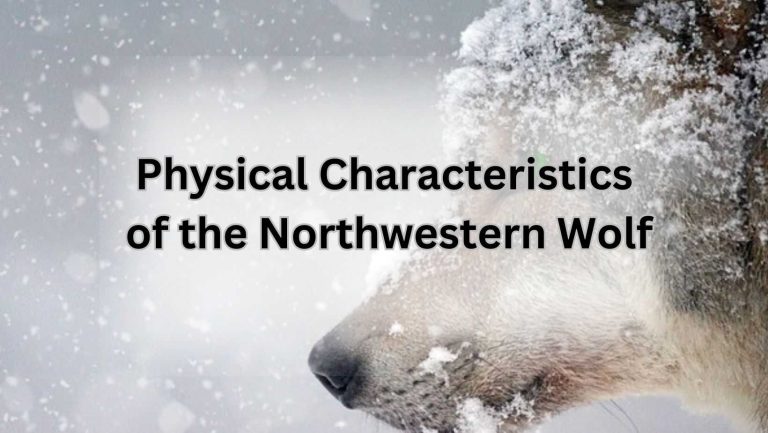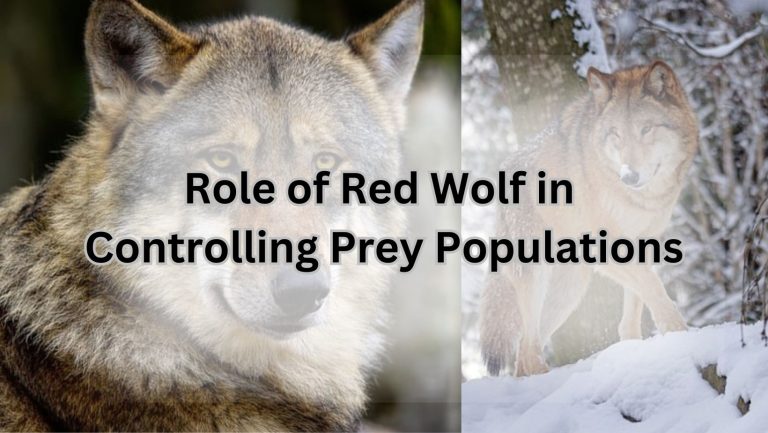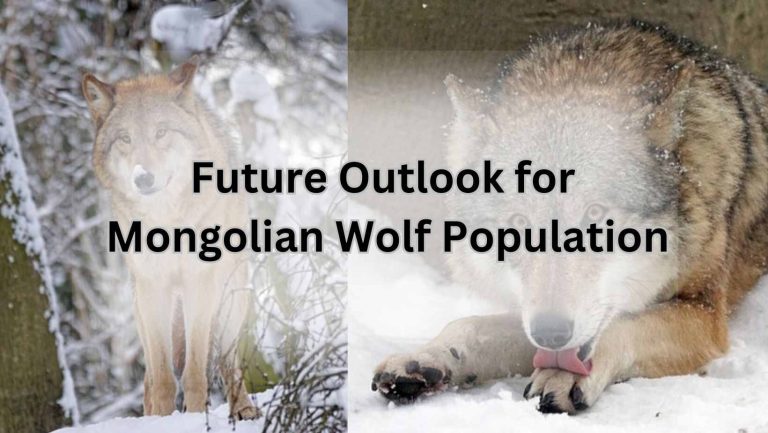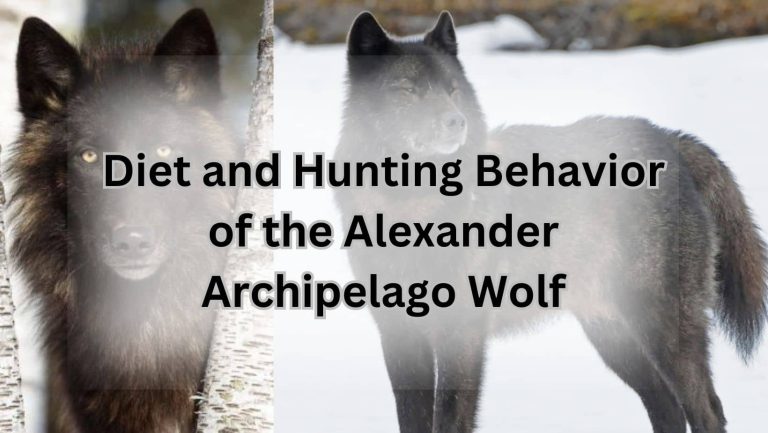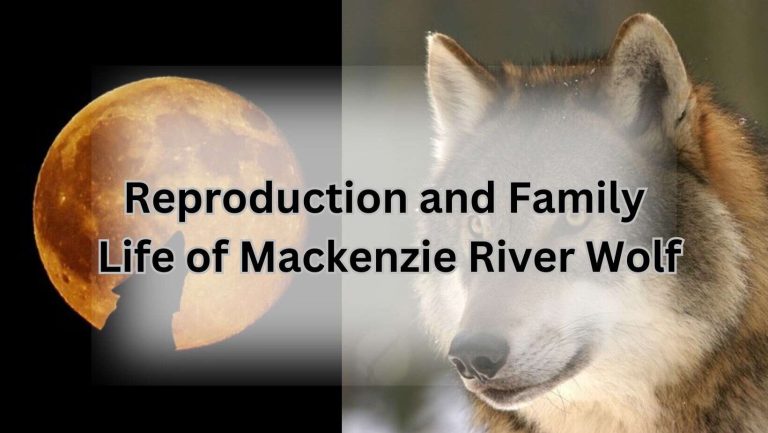Arctic Wolf: Hunted and Hunter – Uncover the Wild Truth!
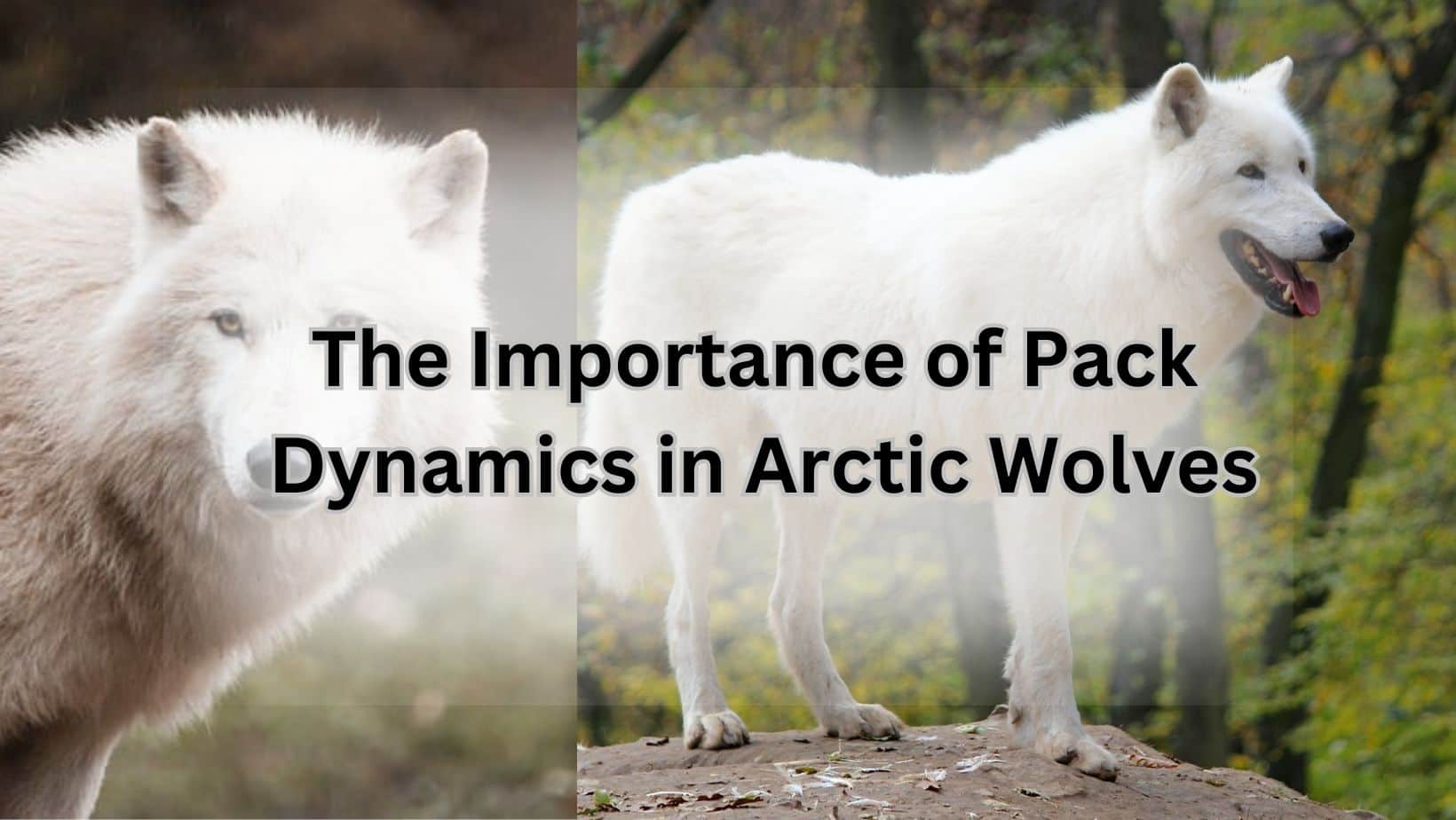
Have you ever wondered what the Arctic wolf feasts on in its icy domain? Let’s dive into the fascinating world of the Arctic wolf’s food chain to uncover the secrets of its diet, hunting habits, and survival tactics. Get ready for a wild ride through the frozen tundra as we explore the intricate web of relationships between the Arctic wolf, its prey, and its predators.
Meet the Arctic Wolf – the Frozen Wilderness Maestro!
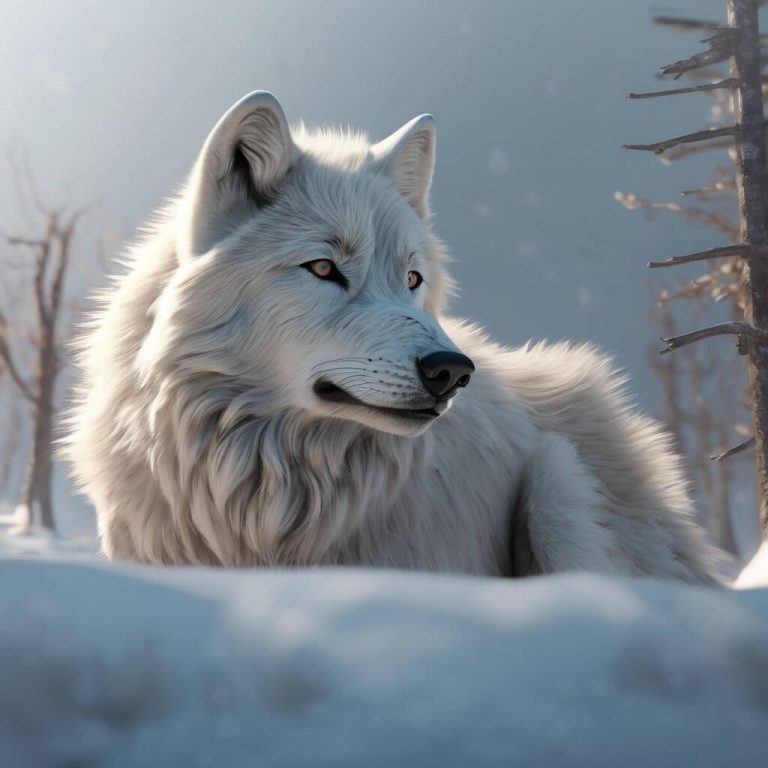
Draped in a pristine white coat that’s not just for show, the Arctic wolf is the undisputed ruler of the icy domain. Imagine a creature so sleek, so cunning, it’s practically the James Bond of the Arctic.
This wolf isn’t just about looking sharp in its snowy camouflage – that fur is a hardcore thermal jacket, a survival must-have in the bone-chilling Arctic winters. So, when it prowls the frozen landscape, it’s not just blending in; it’s rocking a winter wardrobe that makes it the ultimate Arctic fashionista.
But looks aren’t everything – the Arctic wolf is a savvy hunter. With a nose that can rival a bloodhound’s and ears tuned to the Arctic’s symphony, it’s a predator on a mission. Seals, muskoxen, and Arctic hares beware – this wolf’s got your scent, and it’s coming for dinner.
Now, let’s talk teamwork. The Arctic wolf isn’t a lone ranger; it’s all about the wolf pack hustle. Working together, these wolves are like the Avengers of the tundra, taking down big game with tactical precision. Think of them as the strategic masterminds of the Arctic, with each member bringing something special to the dinner table.
And when it comes to dinnertime, those powerful jaws and sturdy physique mean business. The Arctic wolf isn’t just surviving; it’s thriving in a frozen realm that would make most creatures shiver. It’s not just a predator; it’s a symbol of resilience, embodying the spirit of the wild in a way that’s both graceful and fierce.
So, next time you think of the Arctic wolf, picture a sleek, white hero conquering the frozen frontier, a creature that’s not just surviving – it’s thriving in style.
Arctic Wolf Food Chain: Understanding the Prey and Predators of the Majestic Canid
The Prey Animals of the Arctic Wolf
Despite its fierce reputation, the Arctic wolf primarily preys on smaller animals such as Arctic hares, lemmings, and muskoxen. These agile and swift creatures provide the main source of food for the Arctic wolf, sustaining its energy and allowing it to thrive in the unforgiving Arctic landscape.
The Predators of the Arctic Wolf
While the Arctic wolf may be a top predator in its ecosystem, it is not without its own enemies. Larger predators such as polar bears and humans pose a threat to the Arctic wolf, making survival a constant challenge in the frozen wilderness. Despite these challenges, the Arctic wolf has evolved clever hunting techniques and survival tactics to outwit its predators and ensure its place at the top of the food chain.
So, buckle up and get ready to embark on a thrilling adventure through the Arctic wolf’s food chain. From its cunning hunting habits to its strategic survival tactics, the Arctic wolf is a true master of the frozen wilderness. Join us as we unravel the mysteries of the Arctic wolf’s world and discover the delicate balance of prey and predators that shape its existence.
Prey of the Arctic Wolf
When it comes to the Arctic Wolf’s diet, these majestic creatures are true carnivores, meaning they primarily feast on meat. Their diet consists mainly of other animals that inhabit the harsh Arctic environment, making them skilled hunters in the icy wilderness.
Primary Prey Species of the Arctic Wolf
The Arctic Wolf’s menu includes a variety of creatures, with their favorite dishes being musk oxen, Arctic hares, caribou, and lemmings. These furry critters provide the necessary sustenance for the Arctic Wolf to survive in the unforgiving Arctic landscape.
Adaptations of Arctic Wolf for Hunting Prey
Arctic Wolves have evolved over time to become expert hunters in their icy domain. Their keen sense of smell and hearing helps them track down prey from miles away, while their thick white fur camouflages them in the snowy terrain, allowing them to sneak up on unsuspecting victims. Their powerful jaws and sharp teeth make quick work of their prey, ensuring a successful hunt every time.
The Arctic Wolf’s food chain is a delicate balance of predator and prey, with each species playing a crucial role in the ecosystem. While the Arctic Wolf is a formidable hunter, they too have their own predators to watch out for. From polar bears to humans, these creatures must always stay on high alert to survive in the harsh Arctic environment.
So, the next time you spot an Arctic Wolf prowling through the snow-covered landscape, remember that they are not just majestic creatures but skilled hunters who rely on their prey for survival. It’s a tough world out there in the Arctic, but these wolves have what it takes to thrive in one of the harshest environments on Earth.
Predators of the Arctic Wolf
Now, let’s talk about the predators of the majestic Arctic wolf. These fierce creatures may rule the icy tundra, but they are not without their own enemies. Let’s dive into the world of natural enemies, competition with other predators, and the clever strategies employed by the Arctic wolf to avoid becoming someone else’s meal.
Natural Enemies of the Arctic Wolf
Despite their reputation as top predators, Arctic wolves have their own set of natural enemies to contend with. One of their primary threats comes from polar bears, who are known to prey on Arctic wolf pups when food is scarce. Additionally, golden eagles are skilled hunters that can pose a danger to lone wolves or those weakened by injury or illness.
Competition with Other Predators in the Arctic Ecosystem
Competition for food in the harsh Arctic environment is fierce, and Arctic wolves must compete with other predators such as Arctic foxes and wolverines. These smaller predators may not pose a direct threat to adult wolves, but they can steal kills and scavenge leftovers, making it challenging for the wolves to secure enough food to survive.
Strategies Employed by the Arctic Wolf to Avoid Predators
To avoid falling prey to their enemies, Arctic wolves have developed clever strategies to outsmart their predators. They often travel in packs, which not only helps them take down larger prey but also provides safety in numbers against potential threats. Arctic wolves are also known for their keen senses and agility, allowing them to detect danger and escape quickly if needed.
So, while the Arctic wolf may be a formidable predator in its own right, it must constantly be on the lookout for potential threats from other creatures in the unforgiving Arctic ecosystem. By employing cunning strategies and working together as a pack, these magnificent wolves are able to navigate the dangers of their icy world and continue to thrive in one of the harshest environments on Earth.
Primary Prey Species
When it comes to the Arctic wolf’s diet, there are a few key players in the food chain that keep these majestic creatures well-fed and thriving in their icy habitat. Let’s take a closer look at the primary prey species that the Arctic wolf relies on for sustenance.
Caribou: The Iconic Prey of the Arctic Wolf
Ah, the noble caribou, the iconic prey of the Arctic wolf. These majestic creatures roam the tundra in large herds, making them a prime target for hungry wolves on the prowl. With their impressive antlers and swift movements, caribou provide a challenging yet rewarding hunt for the Arctic wolf.
Muskox: Another Important Source of Food for the Arctic Wolf
Next up on the menu for the Arctic wolf is the mighty muskox. These shaggy beasts may look like they stepped right out of the Ice Age, but they are a vital food source for wolves in the Arctic. With their thick fur and formidable horns, muskox put up a good fight, but the Arctic wolf is up to the challenge.
Arctic Hare: Prey Adapted to Survive in Harsh Arctic Conditions
Lastly, we have the nimble Arctic hare, a small but mighty prey species that has adapted to survive in the harsh Arctic conditions. These speedy little critters are experts at evading predators, but the Arctic wolf’s keen hunting instincts and stealthy approach make them a formidable foe for the elusive Arctic hare.
Secondary Prey Species
While the primary prey of the Arctic wolf is the muskox, they also rely on a variety of secondary prey species to survive in their harsh environment. Let’s take a closer look at some of these secondary prey species that play a crucial role in the Arctic wolf’s diet.
Lemmings: Small Rodents and an Abundant Prey for the Arctic Wolf
When it comes to small rodents in the Arctic, lemmings are all the rage. These little critters are like a buffet for the Arctic wolf, providing a quick and easy meal. Lemmings are so abundant in the Arctic that the wolves practically have a never-ending supply of snacks at their disposal. It’s like having a bottomless bag of chips – except these chips are furry and delicious.
Ptarmigan: Seasonal Prey for the Arctic Wolf
During certain times of the year, the Arctic wolf turns its attention to ptarmigan, a type of bird that becomes a seasonal delicacy for these predators. Ptarmigan are like the pumpkin spice latte of the Arctic wolf’s diet – they’re a special treat that only comes around once in a while. These birds provide a nice change of pace from the usual muskox and lemmings, adding a bit of variety to the wolves’ menu.
Seals: Opportunistic Prey for Coastal Arctic Wolf Populations
For coastal Arctic wolf populations, seals are a tasty treat that they can’t resist. These opportunistic predators take advantage of the seals that come ashore, making them an important part of their diet. It’s like having a seafood buffet right at their doorstep – who can resist the temptation of fresh seal sushi?
Natural Enemies of the Arctic Wolf
Polar Bear: The Apex Predator in the Arctic
When it comes to predators in the Arctic, the polar bear reigns supreme. These massive creatures are not only the largest land predators in the region but also the top predators in the food chain. With their keen sense of smell and powerful hunting skills, polar bears pose a significant threat to arctic wolves, especially when it comes to competing for food sources like seals.
Wolverine: A Fierce Competitor for Food in the Arctic
Don’t let their cute appearance fool you – wolverines are fierce competitors for food in the Arctic ecosystem. These solitary animals are known for their scavenging abilities and are not afraid to take on larger predators like arctic wolves. With their sharp claws and strong jaws, wolverines can easily outcompete wolves for food, making them a formidable foe in the harsh Arctic environment.
Golden Eagle: Aerial Predator of Arctic Wolf Pups
While arctic wolves may have to watch out for threats on the ground, they also have to be wary of aerial predators like the golden eagle. These majestic birds of prey are known for their swift attacks and sharp talons, making them a significant threat to arctic wolf pups. With their keen eyesight and agile flying skills, golden eagles can easily swoop down and snatch up unsuspecting wolf pups, making them a formidable predator in the Arctic skies.
So, next time you think about the dangers arctic wolves face in their icy home, remember that it’s not just the cold they have to worry about. From polar bears to wolverines and golden eagles, these predators keep the arctic wolves on their toes as they navigate their way through the frozen tundra.
Competition with Other Predators
When it comes to the arctic wolf’s place in the food chain, it’s not all smooth sailing. These majestic creatures have to compete with other predators for their share of the prey resources in the harsh Arctic environment. Let’s take a closer look at some of their main competitors:
Red Fox: Overlapping Territories and Prey Resources
The red fox is a cunning predator that shares overlapping territories and prey resources with the arctic wolf. While the arctic wolf primarily hunts larger prey like musk oxen and caribou, the red fox goes after smaller animals such as lemmings and voles. This competition for food can sometimes lead to conflicts between these two predators.
Arctic Fox: Similar Diet and Habitat as the Arctic Wolf
The arctic fox is another competitor of the arctic wolf, as they have a similar diet and habitat. Both species rely on hunting small mammals and birds to survive in the harsh Arctic conditions. This can create tension between the two predators as they vie for the same prey resources in the frozen tundra.
Lynx: Competing for Small Prey in Boreal Forests
The lynx is a skilled hunter that preys on small mammals like snowshoe hares, which are also a food source for the arctic wolf. In the boreal forests where their territories overlap, the arctic wolf and lynx must compete for these small prey animals. This competition can influence the hunting habits and survival tactics of both predators in the region.
Adaptations of the Arctic Wolf for Hunting
When it comes to surviving in the harsh Arctic environment, the Arctic wolf has some impressive adaptations for hunting its prey. Let’s take a closer look at how these majestic creatures have evolved to become successful predators in their icy domain.
Camouflage: Blending into the Arctic Landscape
One of the key adaptations of the Arctic wolf is its white fur, which allows it to blend seamlessly into the snowy landscape. This camouflage is essential for sneaking up on unsuspecting prey, such as muskoxen or Arctic hares, without being detected. It’s like wearing the perfect winter camouflage outfit, but without the need for a fashion show!
Enhanced Sense of Smell: Tracking Prey over Vast Distances
Arctic wolves have an incredible sense of smell, which helps them track down prey over vast distances in the barren Arctic tundra. They can detect scents from miles away, making them expert hunters in a landscape where visibility is often limited. It’s like having a super-sensitive nose that can sniff out a delicious meal from miles away!
Pack Hunting: Collaborative Strategies for Successful Hunts
Arctic wolves are known for their pack hunting strategies, where they work together to take down larger prey like caribou or muskoxen. By coordinating their movements and communicating through howls and body language, they can outsmart their prey and ensure a successful hunt. It’s like a well-choreographed dance routine, but with teeth and claws instead of fancy footwork!
Strategies to Avoid Predators
Defensive Behavior of the Arctic Wolf Pack
When it comes to avoiding predators, the Arctic wolf pack has some impressive defensive strategies up their furry sleeves. These majestic creatures are known for their tight-knit social structure, with each pack member playing a crucial role in protecting the group from potential threats. By sticking together and working as a team, Arctic wolves are able to ward off predators and keep themselves safe in the harsh Arctic wilderness.
Utilizing Snow and Ice as Natural Barriers
One of the Arctic wolf’s clever tactics for avoiding predators is to use the snowy and icy terrain to their advantage. These stealthy hunters are experts at blending in with their surroundings, making it difficult for predators to spot them against the white backdrop of the Arctic landscape. By utilizing snow and ice as natural barriers, Arctic wolves are able to stay hidden and out of harm’s way.
Vigilance and Alertness: Key to Avoiding Predators
Another key strategy that Arctic wolves employ to avoid predators is their keen sense of vigilance and alertness. These intelligent creatures are constantly on the lookout for potential threats, scanning their surroundings with sharp eyes and ears at the ready. By staying vigilant and alert, Arctic wolves are able to detect predators from a distance and take evasive action to keep themselves safe.
Conclusion
The Intricate Balance: Prey, Predators, and the Arctic Wolf
As we delved into the world of the Arctic wolf, we uncovered the delicate balance between prey, predators, and the majestic wolf itself. The intricate food chain in the Arctic ecosystem highlights the importance of each player in maintaining the harmony of nature.
Importance of Conserving Arctic Wolf’s Habitat
Understanding the predators of the Arctic wolf sheds light on the critical need to conserve their habitat. By protecting the Arctic environment, we are not only safeguarding the survival of the Arctic wolf but also preserving the entire ecosystem for future generations to enjoy.
Continued Research and Conservation Efforts for Arctic Wolf Survival
Continued research and conservation efforts are essential for the survival of the Arctic wolf. By studying their hunting habits, prey animals, and natural enemies, we can better understand how to protect these magnificent creatures and ensure their place in the Arctic ecosystem for years to come.



